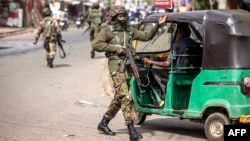Today, roughly two billion people live in conflict-affected areas. “Our charge,” declared U.S. Ambassador to the United Nations Linda Thomas-Greenfield, “must be to stop even one more person from experiencing the hell that is war.”
The good news, said Ambassador Thomas-Greenfield, is that “we know how to create conditions that foster peace.” The first step is to move beyond words and invest in prevention:
“Prevention requires long-term, comprehensive, and inclusive approaches; it requires political will, effective partnerships, sustainable resources, and national ownership. The development of national prevention strategies has been shown to help tackle drivers of conflict and strengthen national infrastructures for peace.”
With broad input and support, prevention strategies can reinforce state institutions, promote the rule of law, strengthen civil society, and build greater tolerance and social cohesion.
“Peace, development, and humanitarian efforts are mutually dependent and reinforcing,” said Ambassador Thomas-Greenfield. She also urged member states to continue learning from each other regarding conflict prevention. Sierra Leone is a case in point, noted Ambassador Thomas-Greenfield:
“Sierra Leone has made significant progress in rebuilding and strengthening post-war institutions and in addressing some of the immediate needs of its people and war victims, including through the creation of the Truth and Reconciliation Commission. The Peacebuilding Fund’s support to Sierra Leone has included a strong focus on land conflict, cross-border and borderland communities’ vulnerabilities, and women and youth empowerment and participation.”
In order to be effective, conflict prevention and peacebuilding efforts must be inclusive, said Ambassador Thomas-Greenfield:
“When women, youth, and other underrepresented voices can participate fully, equally, and meaningfully in political and public life, policies and implementation are more likely to reflect the needs of all of society, and there are lasting and sustainable outcomes for all.”
Next month’s Summit of the Future and the subsequent 2025 Peacebuilding Architecture Review are important means to strengthen peacebuilding efforts, including in conflict prevention and mediation.
The United States remains committed to the UN’s conflict prevention and peacebuilding efforts through its 10-year plans in four priority countries, namely Haiti, Libya, Mozambique, and Papua New Guinea, as well as the Coastal West Africa region.
The United States will continue to stand behind UN initiatives to further inclusive conflict prevention, mediation, and peace efforts. And urges every single member state to do the same.














